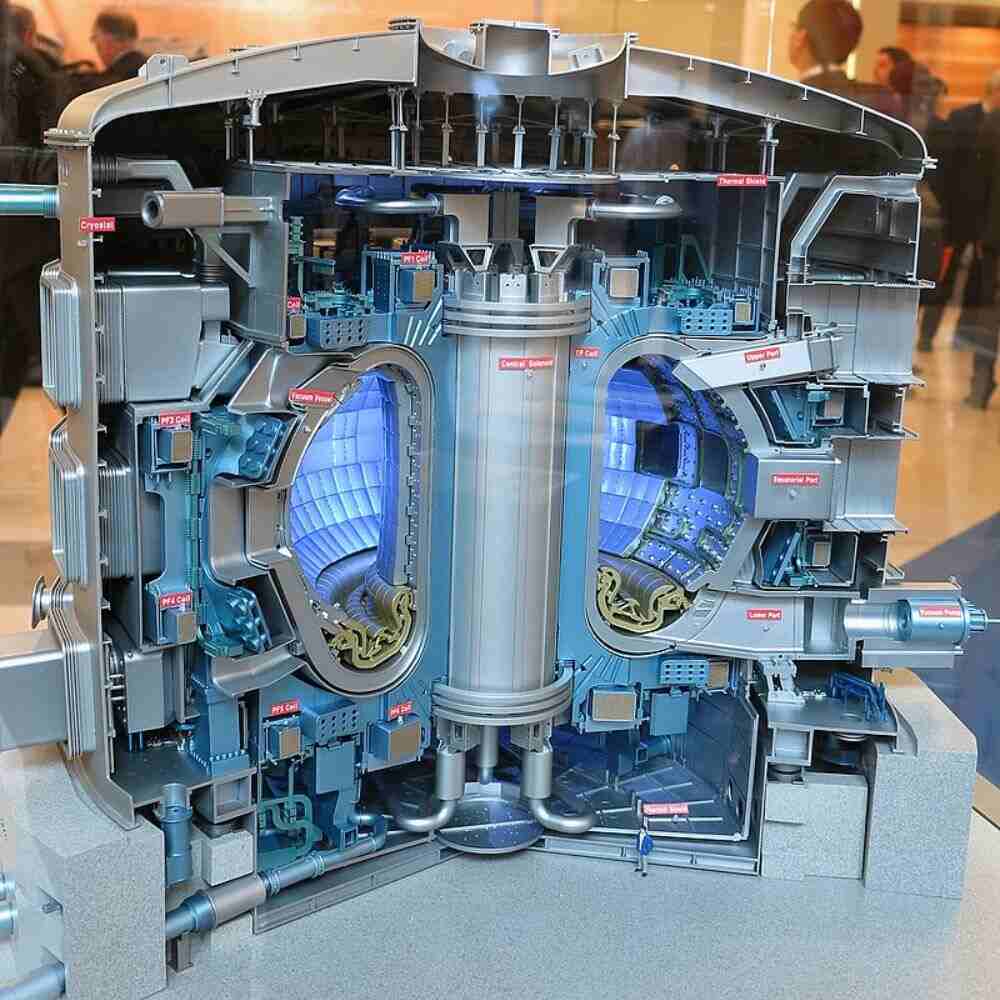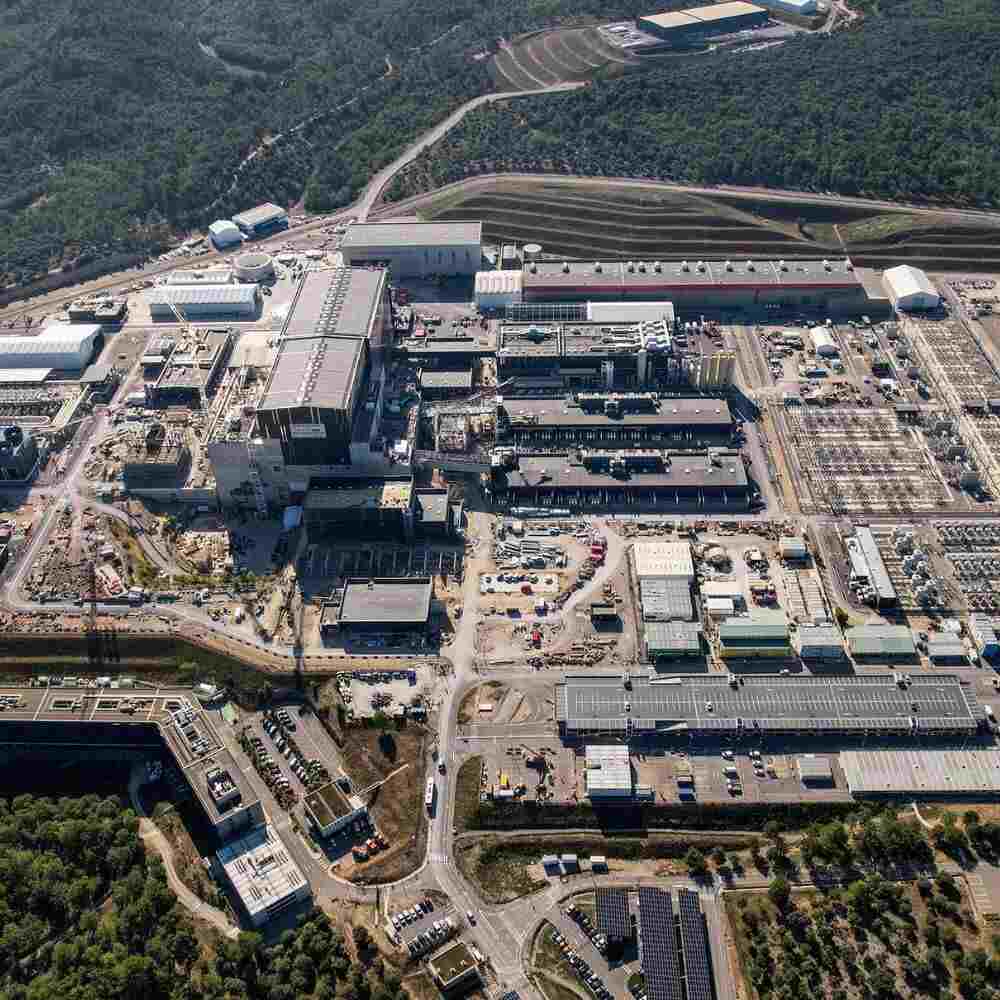ITER, (initially the International Thermonuclear Experimental Reactor) which translates to "The Way" in Latin, stands as one of the globe's most enterprising energy initiatives at present. In the picturesque southern region of France, an assembly of 35 nations is actively engaged in a collaborative effort to construct the most expensive tokamak on Earth—a magnetic fusion apparatus meticulously crafted to validate the viability of fusion as an extensive, carbon-neutral energy source. This cutting-edge technology is rooted in the same principles governing the luminosity of our Sun and celestial bodies.

At the epicentre of ITER's mission lies a pivotal experimental campaign set to propel the frontiers of fusion science forward, paving the path for the prospective fusion power plants destined for tomorrow. The paramount aim of ITER revolves around the probing and showcasing of burning plasmas—those dynamic states where the energy from helium nuclei engendered by fusion reactions sustains the plasma's temperature autonomously, thus mitigating or entirely obviating the necessity for external heating.
ITER's scope extends beyond the mere demonstration of self-sustaining plasmas; it encompasses a comprehensive assessment of the feasibility and seamless integration of pivotal technologies integral to a functioning fusion reactor. These encompass the rigorous testing of superconducting magnets, the validation of remote maintenance systems, and the development of mechanisms to expel power from the plasma. Furthermore, ITER delves into the validation of tritium breeding module concepts that chart a course towards future reactors achieving tritium self-sufficiency. In essence, ITER emerges as a crucible for forging the technological foundations essential for the dawn of a new era in sustainable and potent energy production.
ITER Uses
The ITER Tokamak, boasting a plasma volume six times larger than the current leading machine, emerges as an unparallelled experimental apparatus with enhanced capabilities, facilitating extended plasma durations and superior confinement. The machine's distinctive design is tailored to accomplish several key objectives:
1. Attain a Deuterium-Tritium Plasma Driven by Internal Fusion Heating: The ITER mission advances fusion research into the realm of a "burning plasma," wherein internal fusion heating dominates, demonstrating the efficient confinement of heat within the plasma. Confidence abounds among scientists that ITER's plasmas will not only yield substantially more fusion energy but also exhibit prolonged stability.
2. Generate 500 MW of Fusion Power in its Plasma: Building on the achievements of the European tokamak JET, ITER aspires to set a new standard by producing 500 MW of fusion power within its plasma. This ambitious goal represents a ten-fold return on input heating power (Q=10), laying the groundwork for future machines to harness net energy gain across the plasma.
3. Contribute to the Demonstration of Integrated Fusion Power Plant Technologies: Positioned as a pivotal link between current experimental fusion devices and future power plants, ITER serves as a testing ground for the integrated operation of crucial technologies. Scientists will scrutinise plasmas under conditions akin to those expected in future power plants, evaluating technologies such as heating, control, diagnostics, cryogenics, and remote maintenance.
4. Test Tritium Breeding: A key mission in ITER's later stages involves demonstrating the viability of producing tritium within the vacuum vessel. Given the inadequacy of the global tritium supply for fuelling fusion reactions, ITER offers a unique opportunity to test in-vessel tritium breeding blankets in an authentic fusion environment.
5. Demonstrate the Safety Characteristics of a Fusion Device: An important milestone in fusion history was reached in 2012 when the ITER Organization obtained a nuclear operator licence in France, following a meticulous examination of its safety files. ITER's operational focus includes showcasing the controlled management of plasma and fusion reactions with minimal environmental repercussions, reaffirming its commitment to safety in the realm of nuclear fusion.
ITER Members
The ITER Project stands as a monumental collaboration spanning 35 nations, uniting the resources and expertise of its Members: China, the European Union (via Euratom), India, Japan, Korea, Russia, and the United States. Together, they embark on an ambitious journey to conquer one of the grandest frontiers in science—replicating on Earth the boundless energy that propels the Sun and illuminates the stars.
Under the umbrella of the ITER Agreement, forged in 2006, these seven Members assume joint responsibility for the financial aspects of project construction, operation, and decommissioning. Furthermore, they pledge to collectively shoulder the weight of experimental results and any intellectual property stemming from the fabrication, construction, and operation phases.
Europe assumes the lion's share of construction costs at 45.6%, while the remaining financial burden is distributed equally among China, India, Japan, Korea, Russia, and the US, each contributing 9.1%. Noteworthy is the unique funding mechanism employed, where the Members' financial contributions to the project are predominantly non-monetary. Instead, a substantial nine-tenths of these contributions manifest in the form of completed components, systems, or structures delivered to the ITER Organisation. This innovative approach reflects the collaborative spirit and shared commitment of the participating nations to realise the ambitious goals of the ITER Project.
ITER Commencement
Situated on a sprawling 42-hectare expanse in the southern reaches of France, construction activities have been in progress since 2010, a testament to the steadfast dedication invested in the ITER Project. The pivotal Tokamak Building, serving as the project's nucleus, was officially handed over to the ITER Organisation in March 2020, marking the commencement of the intricate machine assembly phase. A noteworthy milestone in this chapter was achieved with the installation of the substantial 1,250-tonne cryostat base in May 2020.

As of April 2022, the status report reveals that ITER has reached an impressive 85% completion rate, propelling it significantly closer to the anticipated momentous event—the initiation of the first plasma. This eagerly awaited milestone is slated for realisation in late 2025. Acknowledging certain delays in 2023, the project stakeholders remain resolute in their commitment, aiming to mitigate the impact on the original target for plasma creation by 2025. Despite these adjustments, there is optimism that the overarching goal of achieving full fusion by 2035 can be upheld, underscoring the resilient spirit and adaptability integral to the intricate timeline of this groundbreaking endeavour.
ITER Timeline
Here is the complete time of ITER:
| Year | Milestone |
| 2005 | Decision made to site the project in France |
| 2006 | Signature of the ITER Agreement |
| 2007 | The formal creation of the ITER Organisation |
| 2007-2009 | Land clearing and levelling |
| 2008 | Component fabrication begins |
| 2010-2014 | Ground support structure and seismic foundations for the Tokamak Complex |
| 2010-2024 | Construction of ITER plant and auxiliary buildings (except the Hot Cell Facility) |
| 2012 | Nuclear licencing milestone: ITER becomes a Basic Nuclear Installation under French law |
| 2015 | The largest components are transported along the ITER Itinerary |
| 2020 | Machine assembly begins |
| 2023 | Completion of Tokamak Building civil works |
| 2024 | Announcement of updated ITER Baseline schedule |
Comments
All Comments (0)
Join the conversation